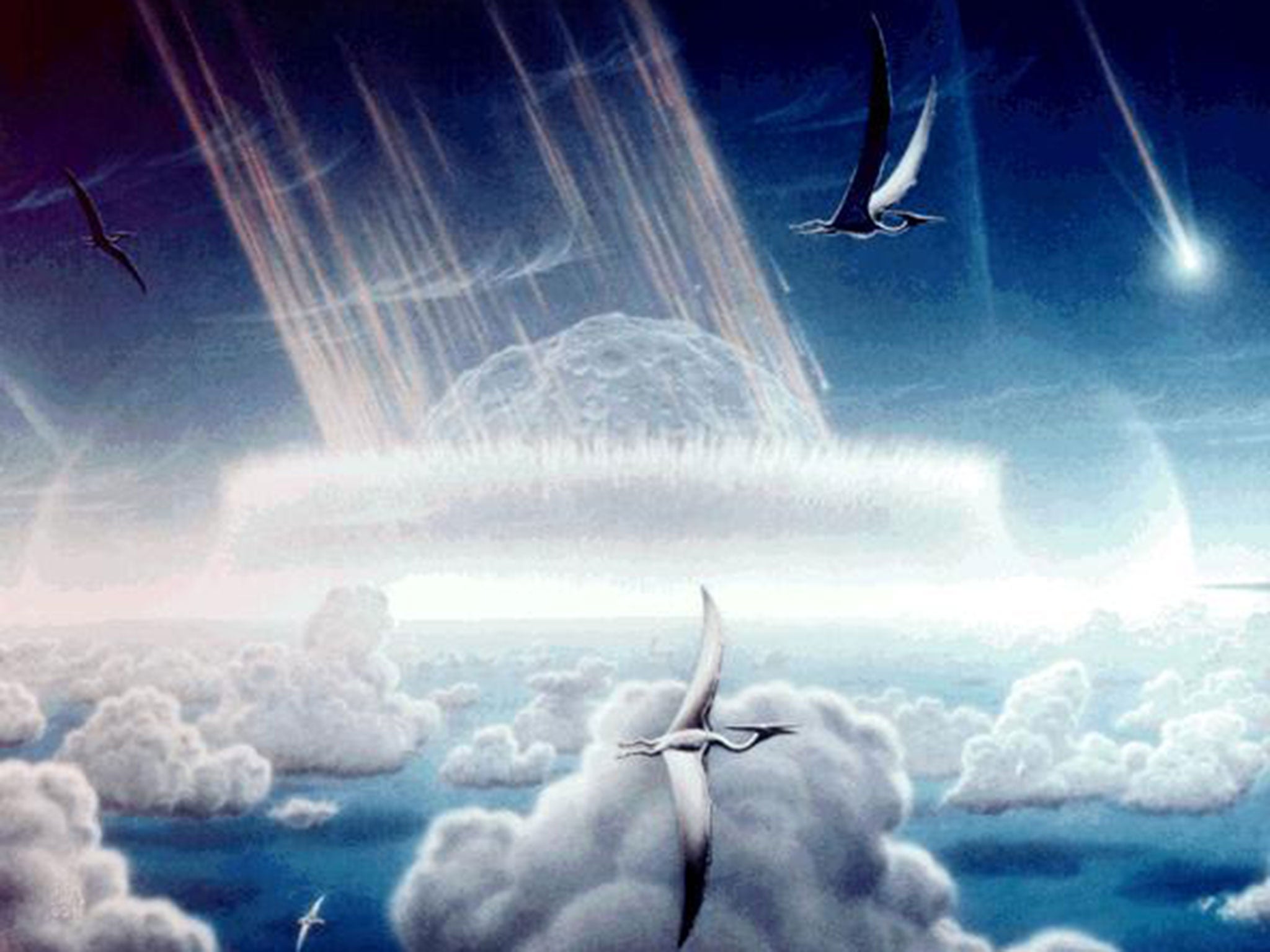Dinosaur-killing asteroid strike created a global tsunami, scientists say
The dino killing asteroid strike created waves as high as 328 feet in some places and likely flooded every coastline on the planet

Around 66 million years ago, an asteroid around 6 miles wide slammed into the water near what is now the Yucatan peninsula of Mexico, generating a massive explosion that changed the climate and killed off the dinosaurs.
Thanks to new research, scientists now know the Chicxulub impact, as it is known, generated a global tsunami wave the likes of which have not been seen since.
“Depending on the geometries of the coast and the advancing waves, most coastal regions would be inundated and eroded to some extent," the researchers wrote in a new paper published Tuesday in the journal AGU Advances. "Any historically documented tsunamis pale in comparison with such global impact."
The new study is the first-ever peer-reviewed paper on a global simulation of the tsunami generated by the Chicxulub impact, according to lead author and former University of Michigan graduate student Molly Ranger, and shows that the waves reached around the globe, even to what is now New Zealand.
“This work shows the tsunami had a global impact and much of the world’s coastlines saw meter-high waves,” she told The Independent in an email. “Areas closer to the impact saw waves as high as 30 to several hundred meters, which resulted in a lot of coastal flooding.”
The researchers used several computational models to simulate the tsunami wave propagation after the impact, according to University of Michigan Professor of Earth Science and study co-author Brian Arbic.
“Models were used to simulate the first ten minutes of impact, in which material from the asteroid, the underlying bedrock of the Earth, sediment, and ocean was displaced tens of kilometers above the atmosphere and (in the other direction) tens of kilometers below the Earth’s surface,” he told The Independent in an email, “in other words, a great big hole was dug out of the Earth.”
The material thrown into the atmosphere by the impact, including a great deal of sulfur, cooled the climate and likely resulted in the Cretaceous–Paleogene extinction, which saw nearly three-quarters of species on Earth die out, including the dinosaurs.
The big hole in the ground, 110 miles wide and 12 miles deep, pushed huge waves outward that scoured the seabed and rose to extreme heights close to the impact.
“Tsunami wave heights tend to greatly amplify in coastal areas relative to the open ocean,” Dr Arbic said. “We estimate that the Chicxulub impact tsunami had an energy about 30,000 times larger than recent large tsunamis such as the 2004 Boxing Day tsunami or the 2011 Tohoku tsunami.”
The simulation suggested open ocean waves in the Gulf of Mexico could have reached 328 feet in height or more, while coastlines along the North Atlantic and South American Pacific Coasts, the two Oceans being connected at that time by the Central American Seaway, could have seen waves higher than 32 feet.
Exactly how high such waves were at the time they reached shores and how much flooding they generated is a task for a future study, Dr Arbic said, but the simulation suggests most coasts were affected by the tsunami within 48 hours of the impact. The team also found geological evidence in seabed samples to support the disturbances caused by the passing waves.
“We expect that there was some large flooding all over the world’s coastlines,” Dr Arbic said. “We will know more about the coastal flooding after our next study.”
While their study didn’t look at the Chicxulub impact asteroid itself or speculate beyond the properties of the Tsunami, but Ms Range did make note of Nasa’s recent Dart mission, which attempt to change the orbit of an asteroid in a practice run in case an extinction level asteroid ever threatens the planet again.
“If an asteroid the size of Chicxulub hit again, there would be global consequences,” she said. “NASA’s recent Dart mission shows that asteroid impacts are a serious threat that hopefully humanity can avert.”
Join our commenting forum
Join thought-provoking conversations, follow other Independent readers and see their replies
Comments


Bookmark popover
Removed from bookmarks